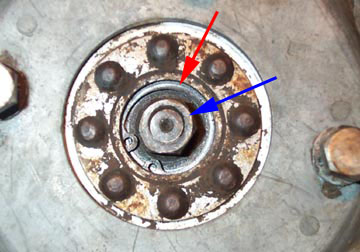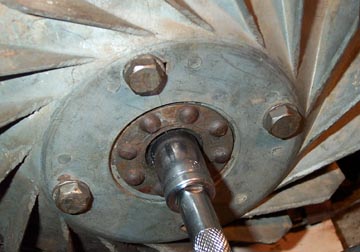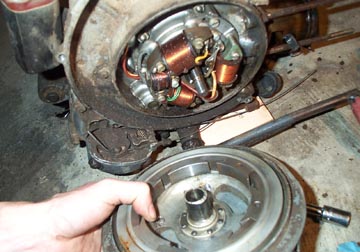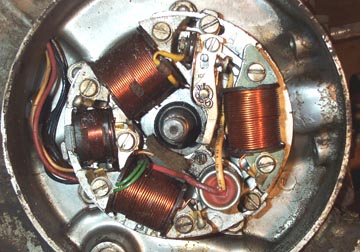 |
 |
 |
 |
 |
 |
 |
||||||||||||
Vespa Pre 1979 Large Frame Engine WorkFlywheel Removal |
Older Vespa Flywheel RemovalThe flywheel serves as a weight that allows the engine to move through the compression stage when there is no power being produced by the engine. When a two stroke has finished the combustion stage and the piston is traveling down, the crank doesn't have enough rotational inertia to go past bottom dead center and go into the compression stage. The flywheel is heavy enough that to stop it rotating is less force than is required to move the piston up to the combustion stage. Lighter flywheel motors (like on tuned bikes) usually have a higher idle rate because the flywheel needs to be spinning faster to move the piston with the same amount of force. Anyway - Flywheel removal is necessary when you want to adjust the timing, remove the stator or split the casings. On older Vespas the system is a little different than a P series bike - you'll need:
Remove the right hand side cowl for access to the motor. There are a series of bolts that retain the flywheel fan cover which need to be removed to get access to the flywheel. Once these are removed the flywheel fan cover will come off. The idea behind the system is that a flywheel puller is not necessary. Instead there is a circlip (red arrow) and a central nut (blue arrow) with a special integral flat lip. The circlip fits in a groove in the flywheel, and as the central nut is loosened the lip of the nut starts to push on the circlip, which tries to push the flywheel off the tapered crank.
In theory this is a great idea as it doesn't really require any special tools. In practice it works most of the time but be careful to make sure the circlip doesn't try to get out of the groove.
I like to spray a little WD40 on the circlip before loosening the nut. This reduces any friction between the rotating lip of the main nut and the circlip. It is especially useful if either part is a little rusty. Use a 14mm socket on the main nut and loosen it until it hits the circlip. You may need to stop the flywheel from trying to turn while you do this - a handy way to do this is to remove the fan from the flywheel by loosening the four fan bolts. Once the fan is removed you can either bolt a long piece of metal to two of the fan bolt holes, or use something in the access holes.
When the flywheel is fully removed you'll see a small woodruff key in the crank taper (or it may fall out). A woodruff key is a small D shaped piece of metal that fits into a keyway in the crank taper. The flywheel also has a slot for the key and this makes sure that the flywheel can only be installed in one position. This is very important because the flywheel position, in relation to the piston, must be fixed in order for the spark to fire at the right time. At this point you should have the stator visible as shown below. There are various different types of stators for points type Vespa ignitions, but yours should look somewhat like the one below.
For more on timing see the timing section in tips and tricks. |
|||||||||||||||||



